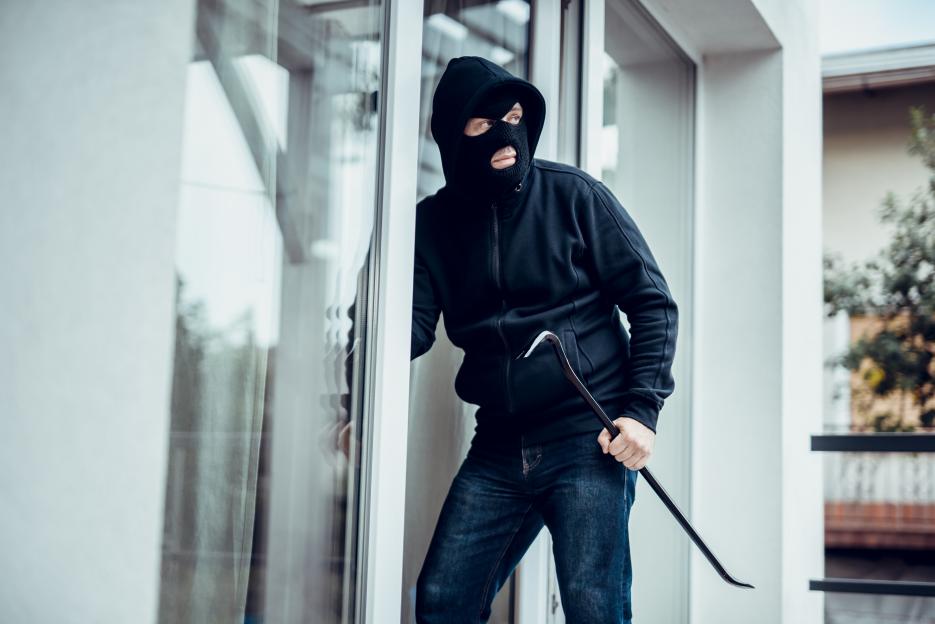A FORMER burglar has revealed the obvious signs homeowners leave that make it easy for them to rob you.
With many of us going on holiday this summer , you’ll want to make sure your home is secure while you’re away.
 An ex-burglar reveals the mistakes you’re making to tempt thieves
An ex-burglar reveals the mistakes you’re making to tempt thieves
And ex-burglar Michael Fraser has revealed just how easy it can be.
The former young offender now spends his time testing security systems for large companies and advising police forces.
He says that at least half a dozen burglaries he is aware of have taken place after homes were put up for sale and video tours were put up on sites such as Rightmove and Zoopla.
“I call it internet shopping,” he told The Times . “How many times when you look online at houses, you get a virtual tour of that property, so you know it inside out?”
“The estate agent website gives you all the details of the property, exactly where it is. And then it will give you a virtual 360-degree tour inside.”
Michael adds that property websites should enforce users to create passwords and upload personal details which should help deter burglars from using the site to gain information on the property.
He adds that homeowners are making themselves easy targets by failing to secure their properties properly.
“Just imagine losing your keys to your property. How would you get in? The opportunist will find their way in very quickly, just as you would,” he says.
Michael recommends closing all blinds and curtains when leaving the house.
He says this signals you’re serious about security and will deter a thief from trying to get inside if they can’t see what is up for grabs.
You also need to think about what they can see from the back of the house.
Many people leave keys inside their back door making it easy for thieves to enter.
Kitchen calendars are usually visible to so they know exactly when you’re away for the summer.
A letterbox cage is also a good idea as it prevents them from being able to reach for keys or the door handle with a metal pole.
Last but not least, having a dog might not be the deterrent you think it is.
Signs warning about having a dog in the property only let thieves know that you don’t have motion detectors and they will be able to move around freely inside the property — as your cats and dogs do — if they break in.
How to protect your home from burglars
- Install a home security system:
- Consider alarms, CCTV cameras, and smart doorbells.
- Choose systems that allow remote monitoring via smartphone.
- Secure doors and windows:
- Ensure all doors and windows have robust locks.
- Use deadbolts and window locks for added security.
- Consider installing a peephole or door chain.
- Improve outdoor lighting:
- Install motion-sensor lights around your property.
- Ensure pathways, driveways, and entrances are well-lit.
- Maintain your garden:
- Keep hedges and shrubs trimmed to eliminate hiding spots.
- Store tools and ladders securely to prevent their use in break-ins.
- Use timers for lights:
- Set timers to turn lights on and off to give the impression someone is home.
- Consider using smart plugs to control appliances remotely.
- Secure garages and sheds:
- Ensure these areas are locked with strong padlocks.
- Store valuable items out of sight.
- Get to know your neighbours:
- Join or form a neighbourhood watch scheme.
- Encourage neighbours to keep an eye on each other’s properties.
- Be cautious with social media:
- Avoid posting holiday plans or location updates online.
- Ensure privacy settings are secure to limit who can see your posts.
- Mark valuables with a UV pen:
- Use a UV pen to mark valuables with your postcode and house number.
- Register items with a property database for easier recovery if stolen.
- Consider installing a safe:
- Use a safe to store important documents and valuable items.
- Ensure the safe is securely bolted to the floor or wall.
- Review your home insurance:
- Check that your home insurance policy is up to date.
- Ensure it covers the value of your possessions.
- Conduct regular security checks:
- Periodically review and update your home security measures.
- Ensure all systems and locks are in good working order.







